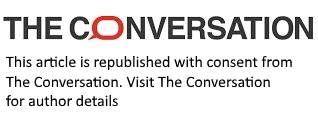Monsters reflect our darkest fears, from zombies to werewolves. But they also bring us together
- Written by Martine Kropkowski, PhD Candidate, Literature and Culture; Professional & Creative Writing Teacher, The University of Queensland

We need each other, people and monsters. Monsters rely on us to exist; they’re only alive because we create them. And people rely on monsters for a variety of reasons: a being to explain a particular cultural moment, or a flesh-and-bones body to represent the “other”, to name just two.
Understanding our fascination with monsters has long occupied the human psyche. And Nicholas Jubber’s Monsterland is the latest foray into this territory.
Part cultural inquiry, part history, part travel book and part reportage, Monsterland tracks down monsters from around the world, recording the stories people share about them, the rituals those people celebrate and the contemporary spaces ancient monsters persist in.
Review: Monsterland: a journey around the world’s dark imagination – Nicholas Jubber (Scribe)
“This book isn’t a search for Big Foot or the Loch Ness Monster,” Jubber explains. “I had no intention of scaling the Himalayas in search of the Yeti (there are better reasons to go mountain-trekking).”
Instead, he sets out to make sense of the monsters we’ve invented, meet the people who cherish their stories, and “peer inside the blurry portal between past and present”.
Going on a monster hunt
As the subtitle promises, Jubber takes readers on “a journey around the world’s dark imagination”. He travels to Cornwall, Bavaria, Morocco, Zagreb, Louisiana. He encounters ogres, zombies, demons, giants, werewolves. And he uses a mixture of methods to explain and analyse his experiences. He draws on cultural and historical scholarship, interviews with locals and his own immersion in place.
Monsters often manifest our deepest and darkest fears. Jeffrey Jerome Cohen, a cultural theorist known for interpreting the meanings of monsters, has written widely on the ways we ascribe meaning to and inscribe meaning upon these creatures. His influence is recognisable in Monsterland.
Cohen proposes several ideas. He describes the monster as “pure culture”, laying out a number of ways we might read it. For instance, he points out the monster’s tendency to resurface throughout history.
Take the vampire, whose classic stories (originating not in Transylvania, but Zagreb, now the capital of Croatia) appear alongside the breakdown of borders and empires throughout history.





